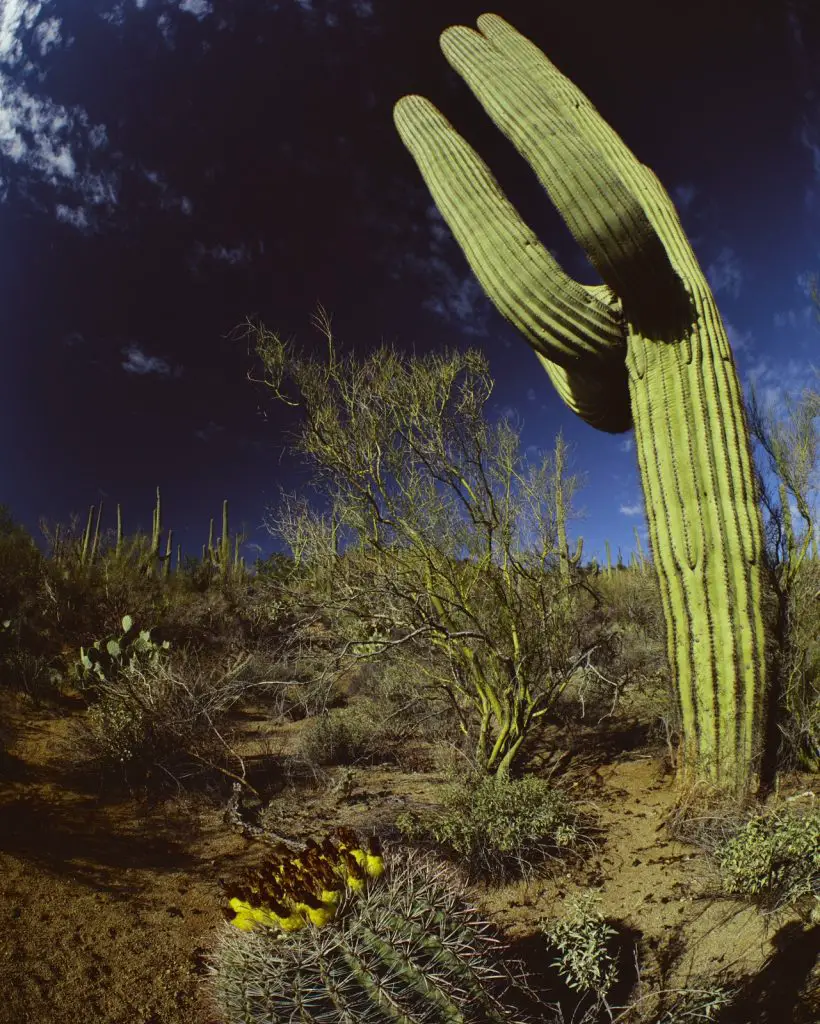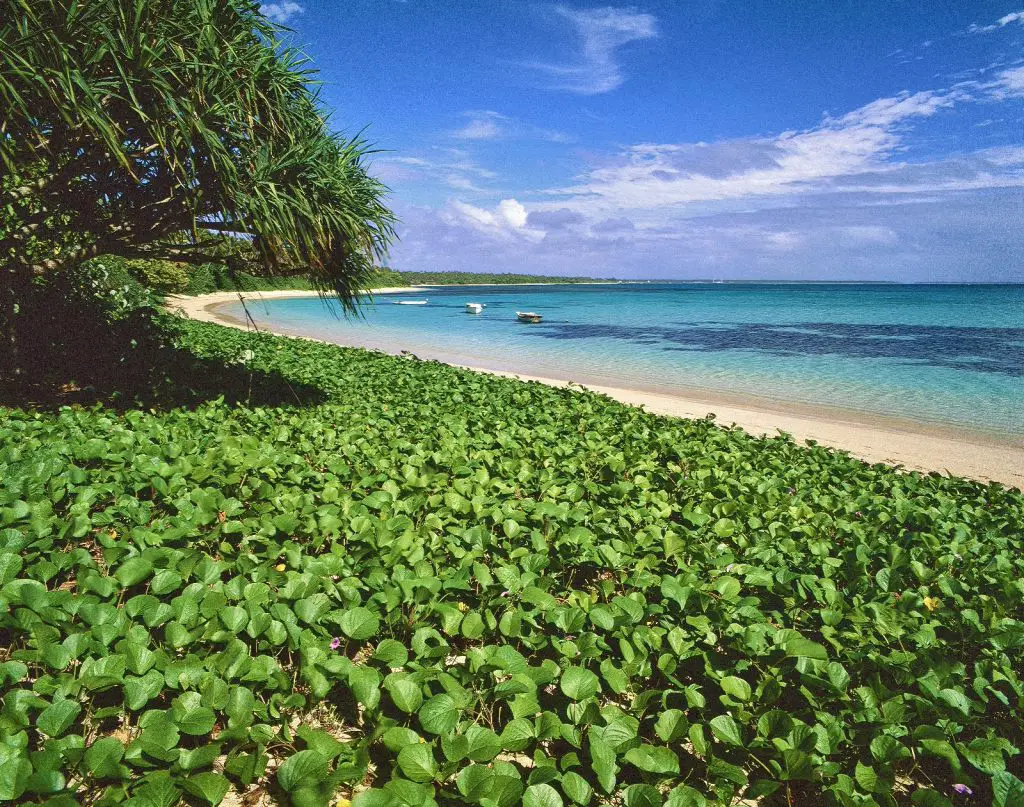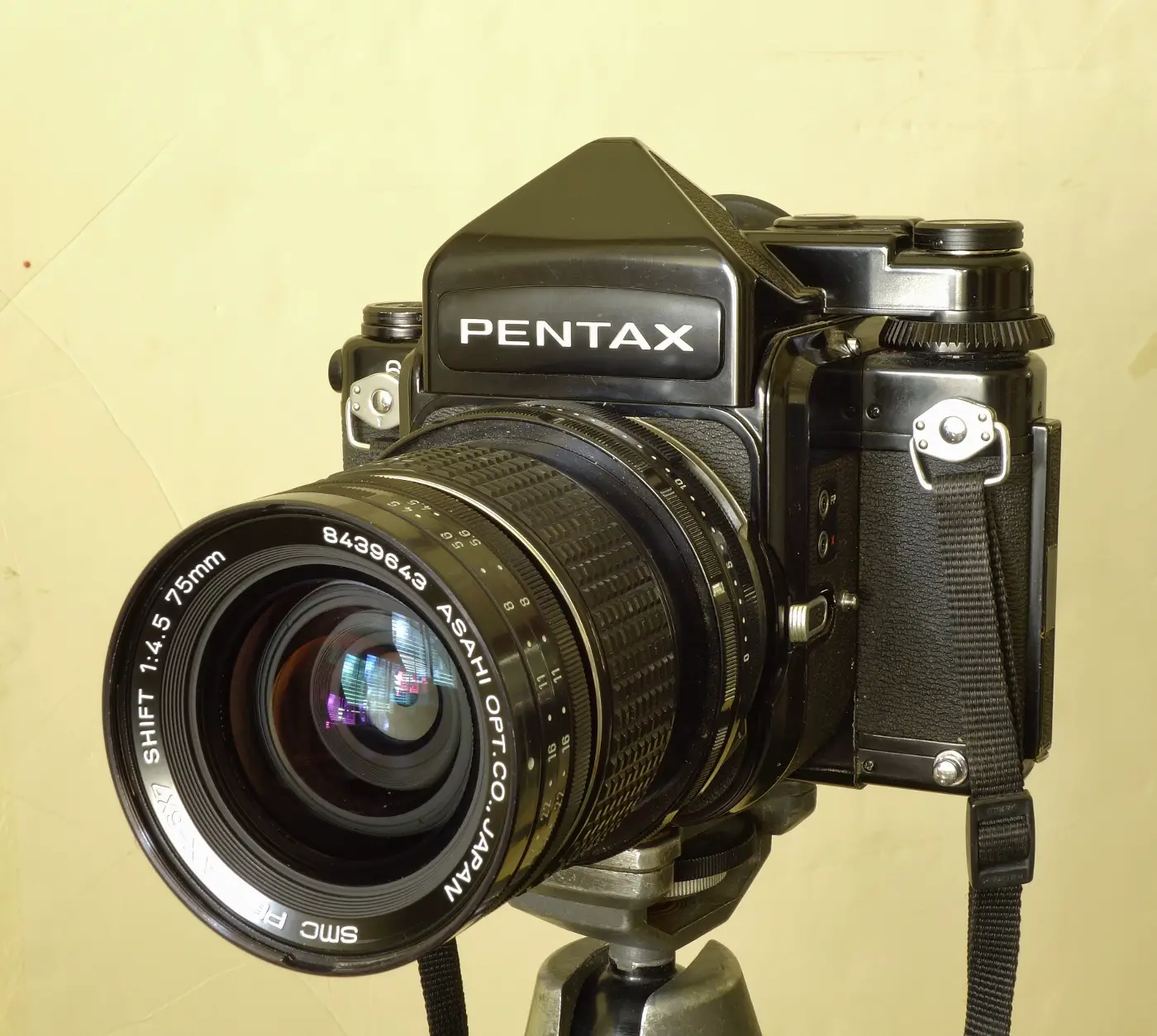I first became interested in the Pentax 6×7 system when I saw one in a camera shop window in 1976. I thought that the camera looked like a giant 35mm SLR, and in a sense, that’s what it really is. I thought the design was very clever and intuitive. Other 6x7s that I had seen were box cameras; this one was different. I bought one in 1988, and ended up buying three more over the years. I’ve been using this system professionally since 2000.
As my first lens, I bought a 105mm f/2.4, as this was considered the normal lens for the camera. This is also the most well-known lens for the Pentax 6×7 system, but in this article, I would like to highlight some of the wide-angle options. Wide-angle lenses for this camera system are mostly used for landscape work, so that’s what I will focus on. I also bought Pentax’s 75mm f/4.5 near the same time as the 105. It’s an amazingly sharp lens but I prefer a different 75mm lens now.

Anyone accustomed to 35mm cameras will struggle a bit, at first, in trying to shoot with the Pentax 6×7. The challenge is in the difference in DOF (depth of field) between the two systems. The longer lenses seen in the 6×7 system are the culprit. The 45mm lens for this system is similar to a 21mm lens in a 35mm format system, in field of view. However, the DOF of the 45mm is much less than a 21mm. The maximum DOF on the 45mm is 4 feet to infinity at f/22. So, one must be very careful about shooting landscapes with objects near the camera. Large “depth of field” shots are so much easier to accomplish with 35mm systems.

The 55mm lens for the 6×7 is a classic because it is so well corrected for aberrations. It’s more accepted for wide-angle work than the 45mm, due to its angle of view. It’s similar to a 28mm lens in the 35mm format.
The 35mm lens for this system is a fisheye and is a limited use lens. I didn’t find it to be as sharp as the rectilinear lenses for this system. It can be used for pro work but one might have to crop the edges to remove the softness seen there.

There are three 75mm lenses for this system, (75 f/4.5, 75 AL and 75 Shift). I prefer the 75 shift lens over the other two because it has an f/32 stop that’s important for added DOF work. It’s at least as sharp as the other two lenses, plus it has the added ability to shift.
The only wide zoom lens for this system is the 55-100. It is easily my favorite lens for landscape work. Not only is it sharp at all focal lengths but it has the f/32 stop, which gives it an advantage over most of the prime wide lenses regarding DOF. It’s a gem but it’s heavy and a bit slow at f/4.5. It does not have a DOF scale on the lens barrel, so a system must be devised to accomplish this. I use colored dots on the lens barrel as hyperfocal distances to aid in landscape shooting, but the details of how this is done is beyond the scope of this article.

Going beyond f/32 for added depth with the wide lenses can be a mistake. The 90-180 zoom has the ability to use f/45 at all focal lengths but that can run into diffraction issues. Using the 90mm setting at f/45 has proven to be useless, so f/32 is the smallest practical stop when using the wide lenses.
This camera can be used hand held in instances where a tripod cannot be used, such as on boats. Fast film and f/8 stops work well in these instances, especially with the wide lenses.
The wide lenses for this system can be used for other purposes beyond landscapes, and I have done a bit of this over the years. Group portraits are one example. I have taken a few macro shots with the wide lenses with extension tubes but longer lenses are better suited for this endeavor.
All of the wide lenses for this system are inaccurate regarding their DOF scale found on the lens barrels. One must use a slightly more conservative setting to get good results. An example of this is on the 45mm lens where one has it set to f/22. The DOF scale must be set to f/19, so that the infinity mark is on f/19. When possible, use the f/16 setting on the DOF scale instead of f/19. There will be a slight improvement in far sharpness when doing this, however one must back up from the nearest part of the subject in the frame because it will be slightly soft if you don’t. In nearly all shots with the 45mm lens, where I want maximum depth, I use the f/19 DOF scale setting.

This camera system was not intended for the beginner, so to use this camera successfully, it is recommended to have experience with smaller formats first. Once the basics of framing, composition, exposure and finding your own creative style are solved, the move to the Pentax 67 can be quite successful. To my mind, the wide angle lenses are the logical place to start.
Share this post:









Comments
Steve Fretz on Pentax 67 – Successfully Use With Wide Lenses
Comment posted: 07/04/2023
Comment posted: 07/04/2023
Art Meripol on Pentax 67 – Successfully Use With Wide Lenses
Comment posted: 07/04/2023
Comment posted: 07/04/2023
Ken Rowin on Pentax 67 – Successfully Use With Wide Lenses
Comment posted: 08/04/2023
Comment posted: 08/04/2023
Comment posted: 08/04/2023
Comment posted: 08/04/2023
Dave on Pentax 67 – Successfully Use With Wide Lenses
Comment posted: 08/04/2023
Thanks for a great article on the ins-and-outs of a legendary system.
Comment posted: 08/04/2023
John Squillace on Pentax 67 – Successfully Use With Wide Lenses
Comment posted: 08/04/2023
Comment posted: 08/04/2023
Ibraar Hussain on Pentax 67 – Successfully Use With Wide Lenses
Comment posted: 09/04/2023
Comment posted: 09/04/2023
Steven Rasmussen on Pentax 67 – Successfully Use With Wide Lenses
Comment posted: 10/04/2023
Khürt Williams on Pentax 67 – Successfully Use With Wide Lenses
Comment posted: 19/04/2023
Comment posted: 19/04/2023
Steven Rasmussen on Pentax 67 – Successfully Use With Wide Lenses
Comment posted: 19/04/2023